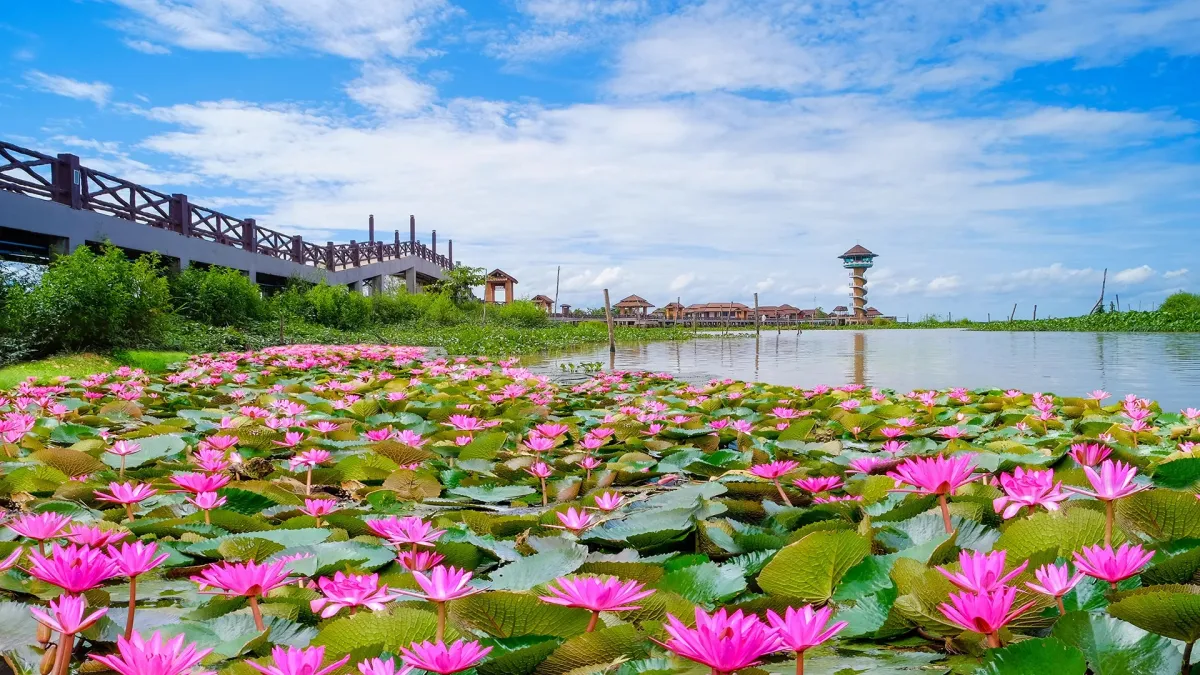Another recommended destination to escape PM 2.5 dust is the wetlands in Phatthalung Province. Here, the weather is mostly good throughout the year, making it a suitable place to relax and breathe in fresh air to the fullest.
Thale Noi, or “little sea,” is a big freshwater lake, but people often call it "Thale Noi Bird Park," as it was the first non-hunting area in Thailand under the Department of National Parks, Wildlife, and Plants, under the Ministry of Natural Resources and Environment, and because it has an abundance of space.
And, owing to the richness of the area and the wetland’s biodiversity, it has resulted in the “Phru Kuan Khi Siant” area of Thale Noi being declared a “world wetland” or “Ramsar Site,” the first in Thailand, on 13 September 1998. Thale Noi is an area with great biodiversity in its ecosystem; wildlife, aquatic animals and plants, and birds are especially abundant.
The highlights of Thale Noi tourism
- Take a cruise to see the “Red Lotus Sea” or “Talay Bua Sai,” the most abundant lotus species. In the morning, the lotus will bring their bright red flowers into full bloom in the area where this type of lotus grows the most. It is considered another colorful beauty of Thale Noi, where the lotus has coexisted with other plants for countless years. But lotus flowers bloom only in the morning. In the late morning they stop blooming; the period that lotus flowers begin to bloom is from mid-February to April. In addition, during the boat ride to see lotus flowers, you can also see other interesting plants, such as water hyacinth, Jak, duckweed, various seaweeds, Krajood, Kong, Liphao, Kok, and Samet which stand tall in the terrestrial forest area.
- You can enjoy bird-watching, with the many different species of birds. The Bird Park at Thale Noi has more than 287 species of birds, including local birds, and migratory birds, depending on the season, such as painted storks, black-headed ibises, purple swamphens, egrets, gray herons, purple herons, little cormorants, black-crowned night herons, teals, spot-billed pelicans, gulls, kingfishers, and many more. The largest number of birds flock to the lake in the months of January to April, with hundreds of thousands of individuals.
- Watch the interesting water buffalo, which can adapt to different food sources. When the water in the lake at Thale Noi decreases until it becomes dry in some periods, until a shoal appears, it will become a pasture. The buffalo will come up and graze on the land. But, when the water of Thale Noi gets higher, it floods the grasslands and the buffaloes’ feeding grounds. So these buffaloes will adapt by switching to eating aquatic plants, such as lotus leaves or algae, instead. They will come together to eat food in the water, which is no doubt the reason that people call it "water buffalo." The water cruise for seeing buffaloes depends on the period; during the floods around December-February, buffaloes can be seen foraging in the water, and they often swim in large numbers when the water is high enough.
Location: Nang Tung Subdistrict and Thale Noi Subdistrict, Khuan Khanun District, Phatthalung Province
For more information
